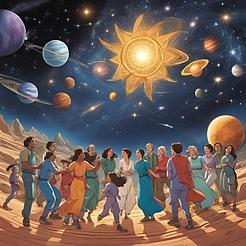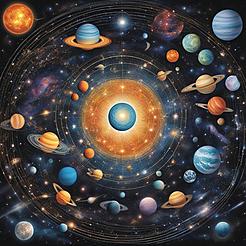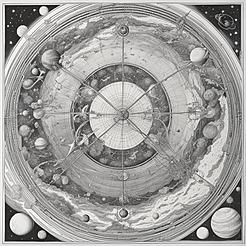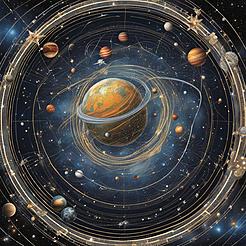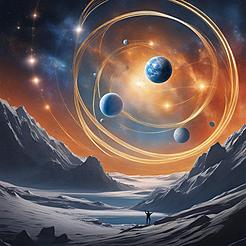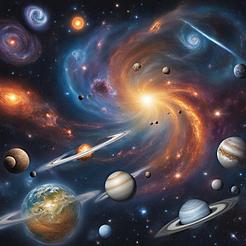 henrydjacob
henrydjacob- Chapter
- 2024-04-15

As we embark on our cosmic journey into the realm of celestial mechanics, we are greeted by a breathtaking panorama of stars, planets, and galaxies that dance across the vast expanse of the universe. The intricate interplay of gravitational forces among celestial bodies shapes the very fabric of space and time, giving rise to the mesmerizing celestial choreography that unfolds before our eyes.
From the graceful orbits of planets around a star to the intricate gravitational interactions between galaxies, celestial mechanics governs the motion of objects in the cosmos with precision and elegance. At the heart of this cosmic symphony lies the fundamental concept of gravity, the force that binds the universe together and dictates the motion of celestial bodies.
Imagine yourself standing on a distant planet, gazing up at the night sky adorned with shimmering stars and swirling galaxies. Each twinkling light represents a celestial body in motion, following the invisible pathways carved by the gravitational forces that govern their movements. The beauty of celestial mechanics lies in its ability to unravel the mysteries of the cosmos, unveiling the hidden rhythms and patterns that shape the universe.
As we delve deeper into the complexities of celestial mechanics, we encounter the enigmatic N-Body problem, a mathematical puzzle that challenges our understanding of multiple interacting celestial bodies. The N-Body problem beckons us to explore the intricate dance of gravitational forces that unfold when more than two objects interact in space, posing fascinating questions about the stability and predictability of celestial systems.
Kepler's laws of planetary motion serve as guiding beacons in our journey through celestial mechanics, illuminating the pathways along which planets traverse their orbits around a central star. These laws, derived from meticulous observations and mathematical calculations, offer insights into the dynamics of planetary motion and the harmonious balance that governs the celestial bodies in our solar system.
Throughout our exploration of celestial mechanics, we encounter the profound influence of gravitational forces at play, shaping the trajectories of comets, asteroids, and moons as they navigate the cosmic expanse. The elegant dance of celestial bodies reflects the delicate balance between stability and chaos, where gravitational interactions sculpt the celestial landscape with exquisite precision.
In the intricate tapestry of the universe, celestial mechanics unveils the hidden symphonies of the cosmos, where planets and stars harmonize in a cosmic ballet orchestrated by the forces of gravity. Each celestial body plays a unique role in this grand cosmic orchestra, contributing its gravitational pull to the intricate web of interactions that define the celestial realm.
As we peer into the depths of space, we witness the celestial bodies in motion, their orbits tracing intricate patterns across the cosmic canvas. The beauty of celestial mechanics lies not only in its mathematical elegance but also in its ability to evoke a sense of wonder and awe at the vastness and complexity of the universe.
Let us continue our journey through the realms of celestial mechanics, unraveling the mysteries of gravitational interactions among celestial bodies and gaining a deeper appreciation for the intricate dance of the cosmos. In the pages that follow, we will explore the N-Body problem, delve into the dynamics of orbital mechanics, and venture into the realms of chaos theory and galactic interactions, each chapter weaving a rich tapestry of knowledge that illuminates the wonders of the universe.
References:
- Hawking, Stephen. "A Brief History of Time." Bantam Books, 1988.
- Carroll, Sean. "Spacetime and Geometry: An Introduction to General Relativity." Pearson, 2003.
